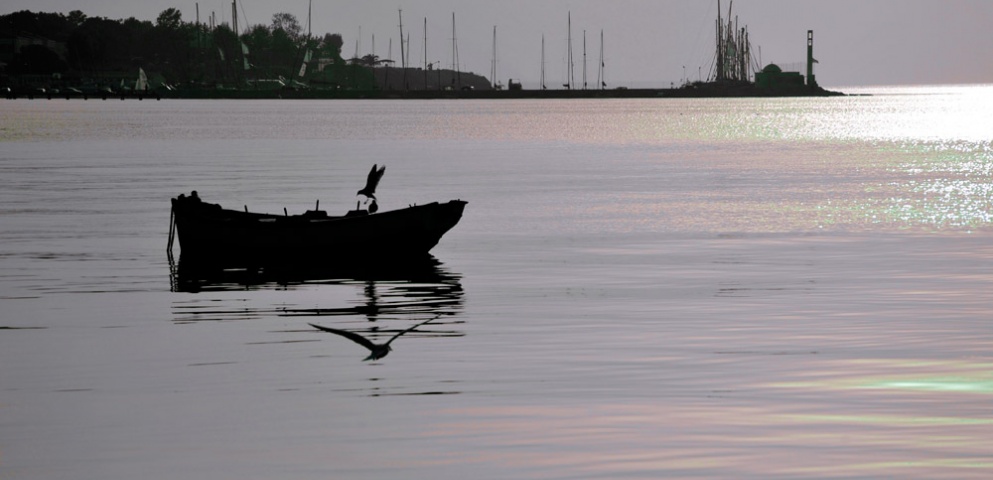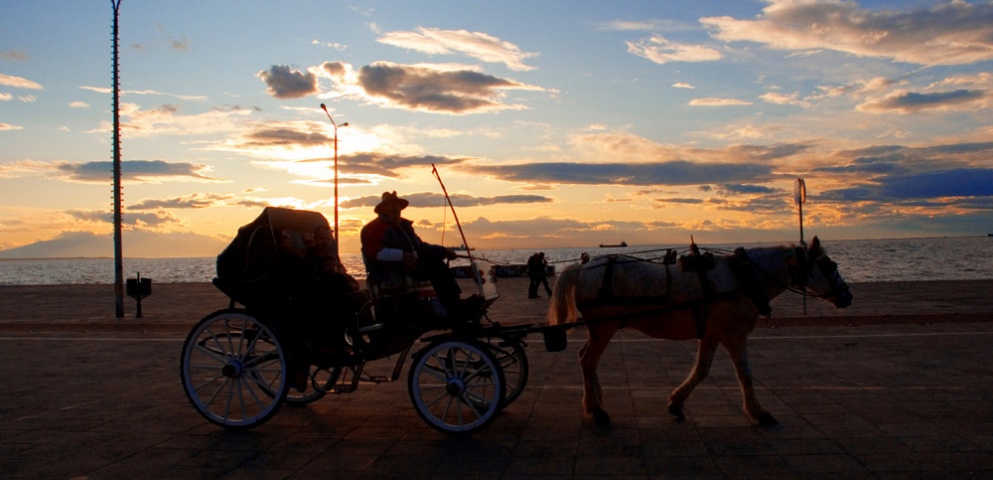1.
The White Tower. A symbol of the town of Thessaloniki built in 1535 and there ever since in Nikis Boulevard. During the Turkish occupation it was a prison for the life sentenced and it was called The Tower of Blood or Bloody Tower. It was painted white at the end of the 19th century by a Jewish prisoner who gained his freedom for doing so. Within the tower there is nowadays an ongoing exhibition of the history of the city supported by the Museum of Byzantine Civilisation. (Entrance fee: €3, open Tuesday to Sunday from 08:30 - 15:00,Nikis Boulevard, for info call 2310 868570)
2.
The churches of St. Dimitrios & St. Sofia. St. Dimitrios is the savior of Thessaloniki and hence this church is very impressive both in size and internal decoration.
Additionally, you must visit the church of St. Sofia in Ermou street, which dates back to the 7th century and was used as a mosque up until 1912 when it was reverted back to a christian church.
3.
A round of the Museums. The Museum of Archaeology (entrance fee: €6, open Monday between 13:00- 20:00, Tuesday – Saturday between 08:00 - 20:00, Sunday between 08:00- 20:00, located at 6 Andronikou street, call for info 2310 830538, www.amth.gr). The Byzantine Museum (entrance fee: €4, open Monday between 10:30 - 17:00, Tuesday – Sunday 08:30 - 15:00 and is located at 2 Stratou Boulevard, call for info 2313 306400, www.mbp.gr). The Music Mansion (Megaro) at 25 Martiou Paralia, call for info 2310 895800, www.tch.gr).
4.
The Thermaic gulf. You should not omit to walk along the promenade of the Thermaic gulf. From the harbour to Nea Paralia this will possibly be the best walk you have ever experienced inGreece.
5.
The Tower of Greek Telecom (OTE). This is an alternative choice if you want to be having coffee at the 4th floor and be revolving 360° over the views of the city within one hour.
6.
The Mansion houses in Vassilissis Olgas street. If you are into architecture then you should pay a visit to the most glamorously nostalgic areas of the city for an unforgettable walk that will take you back to another epoch. The Allatini Mansion, Casa Bianca, Villa Mordoch, Kapantzi Villa and Mansion Midiano to mention just a few.
7.
The Upper City. This settlement was registered as a traditional one in 1979 and constitutes the most historic and lordly part of the city. If you feel like having lunch or dinner while you are there, then approach Tsinariou square which is full of traditional Greek tavernas.
8.
Valaoritou street . A hip neighborhood which emerged in the past 4 years and includes Valaoritou street and the little streets around it. A definite place to be for drinks if you like alternative bars and a busy scenario.
9.
The Mpit Bazaar (Market) and Athonos street. It is the neighborhood behind Aristotelous square and where the locals take life easy...Wine, delicacies and a good mood all around. In Mpit Bazaar you will find interesting delicatessen stores and antiques shops.
10.
The area of Ladadika. An inspirational area to various artists and singers in the past, nowadays one of the hippest areas to be for good food as well as drinks and partying.
11.
Nikis & Aristotelous streets and the arcades of Columbus and Rogoti. Numerous cafes, restaurants and bistros with view to the Thermaic gulf and the old impressive buildings of Aristotelous square.
12.
Seih Sou forest. If you feel like returning to nature at some point of your stay in Thessaloniki, then you will find the forest of Seih Sou -in the north part of the city- very appealing. (Free entrance, open daily between 09:00 and 18:00, www.seihsou.gr)
13.
Galerios Arch & the Rotonda. Galerios Arch or “Kamara” -as it is otherwise called- constitutes part of the Galerian complex and will impress visitors with its marble facades depicting the fights of emperor Galerios against the Persians. Nowadays it also serves as a common meeting point for the locals, especially for students. Behind the Kamara you will find the Rotonda, a rather large building with an impressive dome which was built by emperor Galerios in the 4th century as a mausoleum, reverted to a Christian church in the 5th century and nowadays used as a venue for cultural events.





